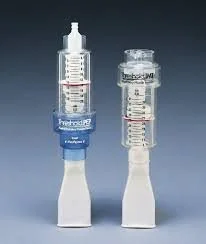RESPIRATORY PHYSIOTHERAPY SPRINGWOOD
With 12 years of experience as a physiotherapist, Jessica began her career in the hospital system, working across general respiratory care, cystic fibrosis physiotherapy, and the heart–lung transplant team before settling into intensive care and advanced respiratory research.
Her passion for complex respiratory care led her to begin treating clients in the community, particularly those who are home-ventilated or require ongoing airway clearance and equipment support.
Jessica is highly experienced with NDIS funding models, respiratory equipment prescription, and writing comprehensive reports to support ongoing respiratory and ventilation needs. She brings a compassionate, expert, and evidence-based approach to every patient she supports.
Complex Airway clearance
Our airway clearance therapy helps clients manage excess mucus, improve lung function, and reduce the risk of infection. Using evidence-based techniques such as ACBT, PEP devices, percussions, and positioning, we tailor each session to your breathing pattern, diagnosis, and daily needs. Airway clearance is essential for conditions such as bronchiectasis, COPD, chronic secretions, neuromuscular disorders, and recurrent chest infections.
Inspiratory Muscle Training (IMT)
Inspiratory Muscle Training strengthens the diaphragm and the muscles responsible for breathing. Using specialised resistance devices, IMT helps reduce breathlessness, improve endurance, and support daily activities. It is highly effective for chronic respiratory conditions, long COVID, neuromuscular weakness, athletic performance, and anyone wanting to improve breathing efficiency.
Cough Assist / Mechanical Insufflation–Exsufflation
Cough Assist therapy supports people who have difficulty clearing secretions due to weak respiratory muscles or neuromuscular conditions. The device delivers a gentle breath in, followed by a rapid breath out to simulate a natural, strong cough. This helps remove mucus, prevent infections, and reduce hospitalisations. It is commonly used for conditions such as muscular dystrophy, spinal cord injury, motor neuron disease, and for home-ventilated patients.



